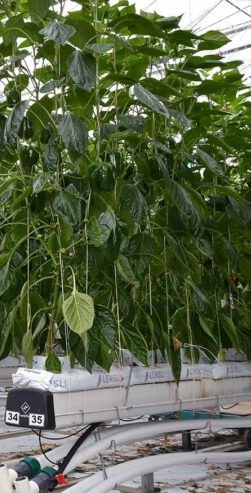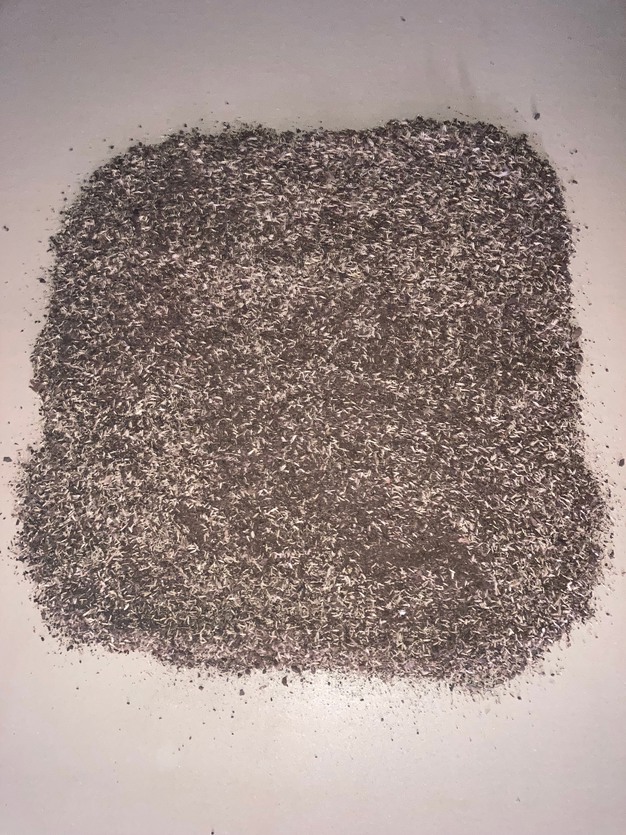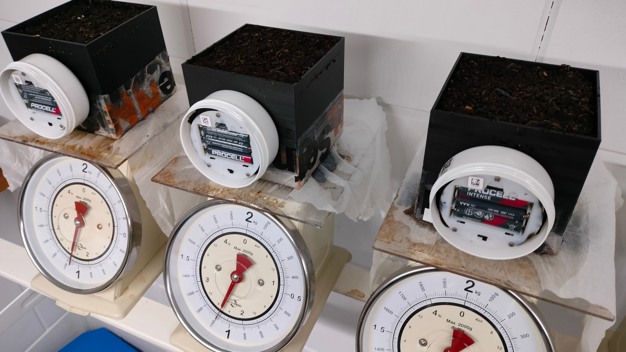
CARA MET sensors have been calibrated for the Lensli product Greenline Food. This is the organic substrate that more and more growers are switching to.
SenseNL's sensors now have the right algorithm for accurately measuring water content, EC, and temperature (WET) in Lensli Greenline Food substrate material. Bram Meulblok: "The absolute readings can be displayed with a deviation of +/- 5%, which is a very high accuracy for mixed substrate materials."
Switch to an organic substrate
Lensli substrate mats have quickly become very popular in pepper cultivation because this substrate material means there is much less plant loss towards the end of cultivation. Bram: "On rock wool slabs, the roots at the bottom of the slab turn brown towards the end of cultivation. The leaves of some plants then go limp, dry out, and eventually these plants even die."
The natural material of the Lensli mix seems to ensure that the roots remain healthy and white, throughout cultivation. "We also saw earlier that the failure rate was much lower with pepper cultivation on coco substrate."
SenseNL's CARA MET sensors had also previously been calibrated for Dutch Plantin's coco substrate and Novarbo's Mosswool mats. Some growers have asked SenseNL to make the CARA MET sensors suitable for Lensli substrate material.
Calibration is challenging
Calibration of a new type of substrate material is crucial for the correct absolute readings of mats sensors. In particular, water content and EC values depend on the mix of materials, as measurements of these values are based on the conduction of small electric currents.
Calibrating a mix of materials is especially tricky because electrical conductivity is different for each type of material. "The electrical conductivity is therefore not always the same in a mix, which makes it more difficult to arrive at the right algorithm and keep the deviation in the measured values limited."

The calibration process
During calibration, all steps must be carried out very carefully:
1. The substrate material is dried very well. Here, this mustn't be forced, as forced drying may change substrate properties.
2. The substrate material is placed in the test fixture.
3. The substrate material is weighed dry in the test rig.
4. The substrate material is fully saturated, by filling it with water and letting it leak out. In this process, the water is calibrated water, with an exact EC value.
5. The course of intering and mass reduction is measured simultaneously in multiple set-ups.
 6. The course of interpenetration and mass reduction is measured again in several setups.
6. The course of interpenetration and mass reduction is measured again in several setups.
7. The known algorithms for these sensors are adapted based on the measured values.
8. The algorithm is tested on the measured values.
9. The sensors are ready for use.
SenseNL remains committed to making WET measurements as accurate as possible through its own calibration setup. Bram: "By making the CARA MET sensors suitable for the Lenslis substrate Greenline Food, SenseNL is taking another step towards optimal cultivation and data-driven water strategy for every grower."
For more information:
SenseNL BV
Tel: +31 (0)85 876 89 09
[email protected]
www.caramet.com
